The aspirational lightness of being, part 4
Last September I came down with a nasty mystery illness that lasted for eight days, and for various logistical reasons, no one was available to “minister to” me (LOLsob). On the third night I lay in the dark in a disgustingly sweat-sodden tangle of sheets, shivering violently even as my skin felt hot as a furnace, and it occurred to me that if I died, my sister (upon her return from a business trip) would have to sort through my mess. In the moment, of course, this thought seemed only a teensy bit melodramatic. I like to joke that I’m a stereotypical Scorpio—skipping blithely through life unafraid of death—but that night I had to call myself on my own BS:
I was scared.
A few weeks later, I found myself in the strange, sad position of sorting through the belongings of a friend who had passed away. My friend was a sweet and loving presence in my life, but he definitely did not “have his affairs in order.” The experience of going through his things—and not being able to find what his family needed (keys, will, etc.) within a reasonable length of time—threw the problem of clutter (both personal and professional) into even sharper relief for me.
If you click on the “aspirational minimalism” blog tag, you’ll see just how long I’ve been talking about wanting to be the sort of person who doesn’t feel like she’s constantly flailing amid waist-high piles of novel notes, books, and craft supplies. In my twenties and thirties, tidying was a seemingly simple matter of practicality and mental health. Work-wise, I figured the best I could realistically strive for was a state of functional chaos. (“You’re publishing another book? Well then, you must be organized enough!”) Now that I am technically “middle aged” (not really, but…kinda?!), there’s a newfound desire to, y’know…end well, insofar as such things are possible. This is why I am a little bit obsessed with The Gentle Art of Swedish Death Cleaning (both the book and the streaming series), the point of which is very easy to distill into one sentence:
Dispense with your excess stuff NOW so your loved ones don’t have to deal with it when you’re dead.
If I am ever hit by a crosstown bus, here is a sampling of what my sister will have to trash, shred, or re-distribute via Freecycle:
A bin of unsorted project notes and smaller caches of scrap paper and post-its (usually tucked into birthday-card envelopes).
Another box containing medical and financial documents in no order whatsoever.
Unfinished knitting and sewing projects going back eight-plus years.
A trash bag’s worth of teeny fabric and yarn scraps intended for throw-pillow stuffing.
At the bottom of a stack of blank greeting cards, an international-Forever-stamped Christmas card I addressed to my friends Shelley and James in 2017 and have forgotten to mail every year since.
Broken doodads (Christmas ornaments, magnets, coasters) I’d intended to super-glue back together.
My space is fully functional; the mess could be a LOT worse. But I feel low-key shame about my many projects in limbo, my paper bins and catch-all bags, and shame is not a friend to creativity. Also, I am moving house later this year, so there’s never been a better time to deal with my shtuff.
The trickster side of my brain reads these labels as SORDID and UNSORDID.
I intend to keep writing publicly about my clutter because I would love to see more creative folks being candid about how we (attempt to) stay on top of our material, and because it seems to me that tidying advice for a general audience only half-applies to our situation. If I were a different sort of person—someone who didn’t operate at “an intense level of creativity” (to quote my therapist), with all the scribbling notes for future novels, the home library (because all writers are readers, and I like to make notes in my books), casting on for a new sweater and starting yet another quilt project for my best friend’s wedding gift, and indulging the urge to save every last bit of paper my niece has ever drawn on (which is even stronger now that she can write her name!), and the gardening and furniture-refinishing supplies in the back room, and let’s not forget my watercolor pencil set on the shelf in the closet and those chocolate molds at the bottom of the bottom kitchen drawer—it would be exponentially easier to keep a tidy house. That low-key shame is compounded by the irony that my creativity is inhibiting itself.
Do I wish I were the sort of person who doesn’t itch to make (and re-make) things, or that I could “tone down” these natural impulses? Of course not. It’s just that something at some step in my creative process is in need of tweaking.
Here’s the thing I didn’t quite understand yet, back when I was blogging about decluttering in 2015:
When we live in a state of creative possibility, dross is inevitable.
False starts, dead ends, and poop-outs aren’t evidence of our failures, they’re an ***occupational certainty.***
If you’ve been following my blog revival of late (thank you, friend!), you will have noticed a theme of setting healthier boundaries with oneself. The boundary here is: I must identify and dispose of the dross (recycle the outdated notes, frog the half-finished sweater and Freecycle the yarn, etc.) so I can focus on the projects I AM going to finish. DO THE THING, not just talk or blog about it, and go on identifying and responsibly-disposing-of on a consistent basis.
I Freecycled ALL! THIS! FABRIC! (and yarn!) before my move to D.C. in 2020. I low-key regret getting rid of a couple remnants in this photo, but it’s not as if I’d’ve used them in the intervening years. It was the right call.
Two more truths we arty folk could discuss more candidly:
1. Creative follow-through is all in the decision making: THIS book project, not THAT one. THIS pattern, not THAT one. Yellow, NOT blue. Which means that if you spend years deferring the choices that make you squirm, you could wind up smothered by your own potential. (Psychologically. Maybe literally, if you have that much yarn.)
2. It’s very hard not to look at an unfinished project in terms of the hours (and dollars) we’ve “wasted” on it, which means that the sunk-cost fallacy keeps us “persevering” when we ought to quit and pivot. If nothing else, it costs us energetically to spend years intending to finish something. This is how one ends up with a closetful of UFOs. (“UnFinished objects.” Not nearly as interesting, I know.)
It is the practice of a mature artist (a mature human!) to face her limits—24 hours in a day, 365* days in a year, an inescapable (if unreadable) countdown clock—and make decisions accordingly.
So over the next year, I intend to share my progress in posts on the following subtopics:
How I prioritized my list of knitting, sewing, and mending projects using Google Sheets and arranged my time in order to, y’know, actually finish them! (along with notes on overcoming the sunk-cost effect)
Re-organizing my supplies and UFOs for ease of worst-case-scenario donate-ability, storing like with like instead of a half dozen mixed-up bins (I’m going to call that post “The Awkward Art of Swedish Death Crafting.” Subtitle: “YOU’RE WELCOME, KATE!” 🤪)
Figuring out a new approach to processing paper so I actually follow through this time (…maybe?!?), and using Victoria Nelson’s adage about creative discipline (that it arises naturally out of honoring your deepest preferences) to figure out a note-taking and -sorting protocol I can stick with (understanding that I am and probably always will be an analog kind of girl, and am therefore not in the market for a tablet, app, etc.)
Organizing my writer’s archive [hopefully that sounds less pretentious than “literary papers”], part 1 (analog)
Organizing my writer’s archive, part 2 (digital)
Rethinking the home library, part 2: MOVING DAY! (how my “read and release” initiative turned out)
Rereading those “aspirational minimalism” posts from 2015, I’m tempted to sigh at the person who wrote, You gotta release everything that's over and done with to make space for all the exciting new stuff that's waiting to come into your life, or My new strategy is to bring all that stuff to the Writers' Room, parcel it into manageable chunks and go through one stack at the beginning or end of each writing session. We'll see how that goes. Spoiler: it didn’t!
On the other hand, the home-workspace photos I posted back then prove to me that, for the most part, I am tidier than I used to be. It’s also a lot easier to cut myself some slack for being a flawed and sometimes-flighty earthling. Nothing bad is going to happen if I don’t manage to clear out any of that paper, or only a few folders’ worth, before my next move. The most self-compassionate approach is to say that if I can share something here that someone else finds motivational or otherwise useful, I’ll consider this latest go-around at least a partial success.
Rethinking the home library
Books come alive only in the act of reading them. That’s the overlooked everyday magic of what reading is, which is that [books] are inert, in some ways they literally don’t exist on the shelf when their pages are closed. It’s only when a mind is applied to the act of reading that the story comes to life.
(Ideally I’d have no books on top.)
Like every other nerd on social media, I used to drool over photos of sprawling home libraries. A library is (usually) a safe space in which to learn about pretty much anything you want, in your own time and on your own terms, and when it’s your very own collection—infused with all the complexities of identity and curiosity and ambition and belonging, curated and arranged according to your own intellectual priorities and aesthetic principles—it becomes rather difficult to look at your collection with any measure of objectivity. Yet in this post I shall attempt it!
Here is the squirmy truth, which applies to my yarn and fabric stashes almost as much as my books: the rate at which I acquire is substantially faster than the rate at which I consume. This is probably true for most of us, eh? Our shopping patterns result in a compounding accumulation of objects we are not using for their intended purpose. When I lived at home my mother used to joke about the ceiling caving in, but this is not as funny as it used to be. My overflow—often-teetering piles on the top surface of all but one of the four bookshelves in my apartment—is a source of anxiety. I don’t want to live out my last years entombed amid dusty piles of books, 97% of which I never got around to reading. I never ask myself, “Will I actually get around to reading this new book before I die?” as I stand at the counter of one of DC’s many wonderful indie bookshops. But maybe I should.
Lately I’ve been thinking of my collection in a new way. I am telling myself that my books do not truly belong to me, I’m just keeping them neat and dry until it’s time for them to move on to their next reader. Reconceptualizing my home library as an evolving organism has made it much easier to let go of books I got for free when I worked at HarperCollins (that was TWENTY YEARS AGO, people!), useful books (reference, cookbooks, knitting pattern collections, etc.) I have never actually used, and books I’d been holding onto only because I have warm feelings for the people who gave them to me.
The solution is (and always has been) obvious: to avoid cluttered bookshelves, I need to read-and-release at a faster rate and/or winnow my collection before instituting a one-in-one-out policy. (Reading faster means reading more efficiently—turning the phone on silent before I chuck it onto another soft piece of furniture across the room. Side note: the other day a new friend told me about the Silent Book Club and I feel extra motivated to participate.)
How am I deciding which books to give away? Here are some questions I’ve been asking myself:
Have I already read this book? Do I (realistically) think I will read or refer to it again?
Do I feel obligated to go on intending to read this book? If so, why? Can I release myself from that “obligation”?
If I give this book away and change my mind about it later, will it be difficult or expensive to replace?
Does this book represent who I am (hopefully) growing into, or who I am growing out of?
If I’m feeling resistance to parting ways with this book, can I put a generous time limit on it? Say, five or ten years from date of purchase?
Can I listen to the audiobook instead? (More knitting/sewing time!)
It is also helping to consider what good a book might do if I release it. Take a book like The Hate U Give. Given the subject matter it feels wrong to write that I enjoyed it, so instead let’s say this novel deserves the recognition it has received. I am probably not going to read it a second time, however, and if I leave it on my shelf at home, there is zero chance of the ideal reader finding this particular copy in a Little Free Library at the absolute perfect time in their emotional and intellectual development. How miraculous that would be!, and even more wonderful for my never knowing that it happened.
So yes, that copy you see in the photo above—it used to be “mine.” If I change my mind about rereading it, I can always purchase another copy or make use of the public library. The White Goddess used to be “mine” too; it was a gift from a man I dated for three weeks almost ten years ago. If I ever want to, y’know, actually read this book, I can check it out of the library.
Here are more books that belonged to people I used to be:
Anne of Green Gables was my favorite novel as a teen. Now I feel melancholy when I think of those books because Anne gave up writing.
A gift from the parents of a boyfriend I had in my 20s. I was holding onto this partly for sentimental reasons and partly for Moon Ireland research, except I’m not writing for Moon Ireland anymore. I’ve had almost 16 years to dip into this book, but I never have.
A book I purchased at an Irish imports shop in Baltimore on an 8th-grade field trip and forgot on the charter bus. My dad followed the bus for a couple miles down the highway before we hit a red light and I could run to the front passenger door and get the driver’s attention. Again, haven’t ever done more than briefly dip into it.
The Camille who thought she’d read and review Bill Schutt’s history of cannibalism for a film promo post. Did she? Ha!
A book taking up space on my shelf for years and years, the spine never cracked? That’s a sunk-cost relationship. I may have moved house with it many times, even across the Atlantic. Carry it all this way, through breakups and so many other big life changes, only to leave it in a Little Free Library without ever having read it?! But when I started asking myself question #4, it was a lot easier to see a long-neglected book as an object deserving of a more enthusiastic caretaker.
A few more notes to self that are helping me let go:
If I never got around to reading this one for Petty Magic research, what makes me think I am EVER going to read it?
I have the space that I have, here and now, no more and no less. Once there are too many books to fit on my shelves, I don’t need another bookshelf, I need fewer books. (See the “container concept.”) I am not allowing myself to keep books in cardboard boxes in my closet to fill the shelves of a future Macksey-esque library.
Choosing to keep a book is often an instant yes or no, but it’s always worth gently re-examining an assumption that a book ought to stay “mine” to the very end.
I won’t let myself feel guilty for paying full price for a new book and later giving it away unread because I’ve realized I’m not going to read it in the next few years. If nothing else, I am supporting my own industry.
Fictionwise, two books out of three I’ll release after reading, even if the novel was written by a friend. If it stays on the shelf, it inspires and entertains no one else, only past-me. If I release it, I could introduce my friend’s work to a reader who will go on to purchase new copies of their other books.
I’m much more likely to hold onto nonfiction for future reference, be it for novel research or personal growth. Though once I’ve finished revising the manuscript in question, I will reassess.
With this new mindset, I’m much more likely to choose not to finish a book I’m not enjoying.
And how am I giving my books away? This is the fun part! I downloaded the Little Free Library app so I can make a game of locating LFLs, wondering if the next one on the map will have space for at least one deposit, and hopefully unloading all the books I’ve packed on the one-hour walk to my therapist’s office. It feels like a reverse scavenger hunt.
I must admit that there are two bins of books still in “purgatory”:
1. books I want to take notes out of before donating (like cookbooks, self help, etc.)
2. Books that have been sitting on my shelves for years that I do still have a desire to read but am rather sure I’ll be ready to release afterward. Whatever I don’t make time to read before my next move, I will donate.
How do you manage your home library? Has your attitude about book collecting evolved over time? 📚
The Aspirational Lightness of Being, part 3
Truth be told, I kinda forgot I even had a blog for a few weeks there. I've been busy with Life Without Envy revisions (it's in the spring 2017 catalog! eeeeeeeeee! and we almost have a cover!), redecorating my room (after my landlord painted it while I was away in Ireland and Georgia), holiday prep, and various social outings (more than usual; that time of year, I guess!) And when I did think about the blog, I remembered all the projects I have temporarily abandoned—the indie bookstore appreciation, Hinduism 101, Vegan by the Seat of Your Pants, travel recaps, and a few more besides. Blogging is no fun when you start thinking in terms of shoulds.
Well, if every other year has started with resolutions about new projects, maybe this time I'll resolve to wrap up some projects that are already on the table. For now, because of all the room redecorating, I'm still a little bit obsessed with what I'm calling aspirational minimalism—so here's a post I started writing before I left.
* * *
Some of you lovely blog readers prefer to reply via email rather than commenting below. I received this response to a recent post about recycling my grade-school artwork:
But if you are photographing it, are you really tossing your artwork? Are you REALLY shedding that skin?
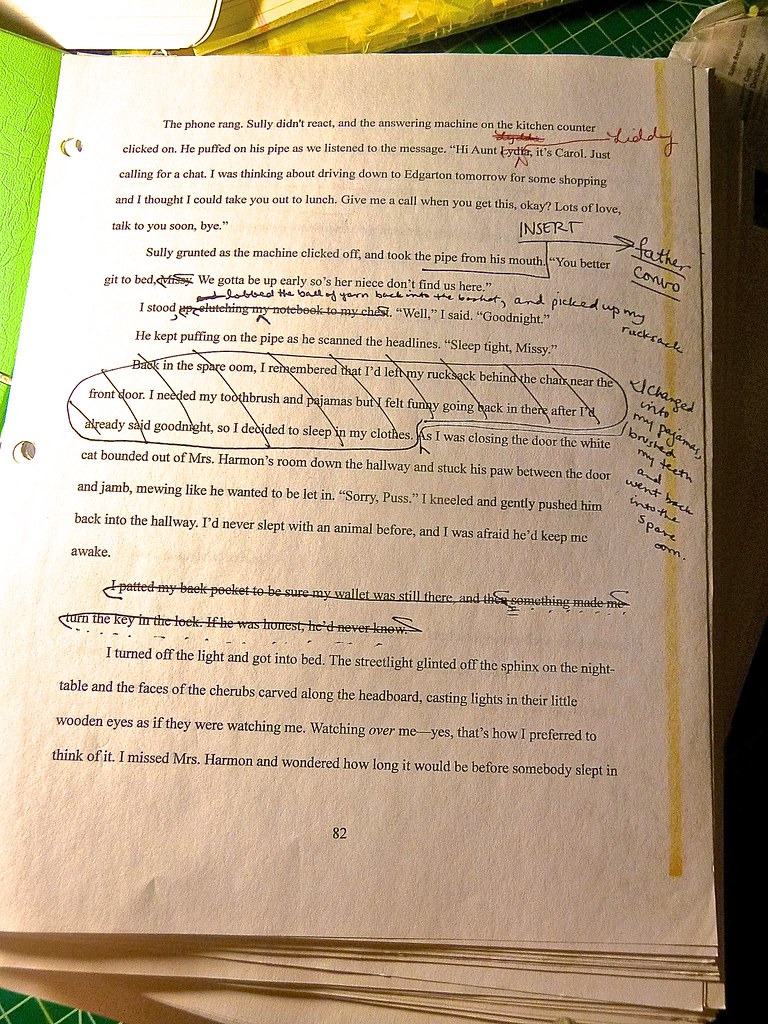

Touché, my friend. Maybe someday I will be the kind of person who burns all her old journals and lives with little more than basic cooking utensils and a few sets of clothing, but I am not there yet. (HAAAAAAAA.) I know that if I had trashed all those drawings and paintings without taking some photographs, I would already be regretting it. The main thing for me right now is to get rid of all the old stuff that is taking up physical space. I believe that domestic clutter is always a reflection of emotional and psychic clutter; and if this new mantra sounds simplistic, it really doesn't matter, because each time I get rid of a bunch of stuff I feel noticeably better about myself, noticeably lighter. So if you are beginning to suspect that there may be many more installments of this "Aspirational Lightness" business, you are probably correct.
Because my landlord was painting while I was gone, I spent a few days before I left boxing everything up and hiding it in my closet and crawl space. Ideally I would have sorted through the paper piles—yes, those notes from my NYU days are still here—but I only managed to get rid of what was obviously a waste of space and could be recycled with little effort. At first I'd bristled at Marie Kondo's declaration that NO ONE needs to hold onto ANY PIECE OF PAPER, EVER. I am a writer, you know. I write on paper. I neeeeeeeeed it!
Well, I need some of it, but only for now. Notes for current and future projects? Yes. Drafts of books that have already been published? No.
Why am I saving this? It's not just writing, of course. I'd started a file ("file" as in another paper bag, haha) called "read and recycle." Then I realized I'd been collecting these articles to read since I moved to Boston two and a half years ago, and in those two and a half years I had not gotten around to reading any of them.
Life is short, my friends. I recycled the lot.
I also got rid of a bunch of Christmas, birthday, and thank-you cards. I'd strung these up in festoons from the ceiling, which made my space feel a little like a dorm room. I took them down and recycled most of them. As for non-paper clutter, last week I finally bought myself a dresser. I'd been stacking clean clothes on a shelf in my closet, but I have to push the hanging clothes aside and reach into the dark for what I need. Not at all ideal. I got an unfinished dresser from the Bookcase Factory Outlet (not far from Porter Square) and at some point I'll finish it myself. Thanks to all the sewing I've done this year, I've found it pretty easy to "edit" my wardrobe down to the things I actually wear—but I still need a convenient place to store them. I've sorted through my fabric scraps, so I have a big bag of stuff to Freecycle. The fabric I'm keeping is folded away in a set of plastic drawers under my work table, but as you can see, I still need neater and more attractive ways of storing my art supplies (and current sewing projects and stack of mending). I'm thinking I'll cover some cardboard boxes with pretty paper.
That box at the top left is full of old notes though. My new strategy is to bring all that stuff to the Writers' Room, parcel it into manageable chunks and go through one stack at the beginning or end of each writing session. We'll see how that goes...
* * *
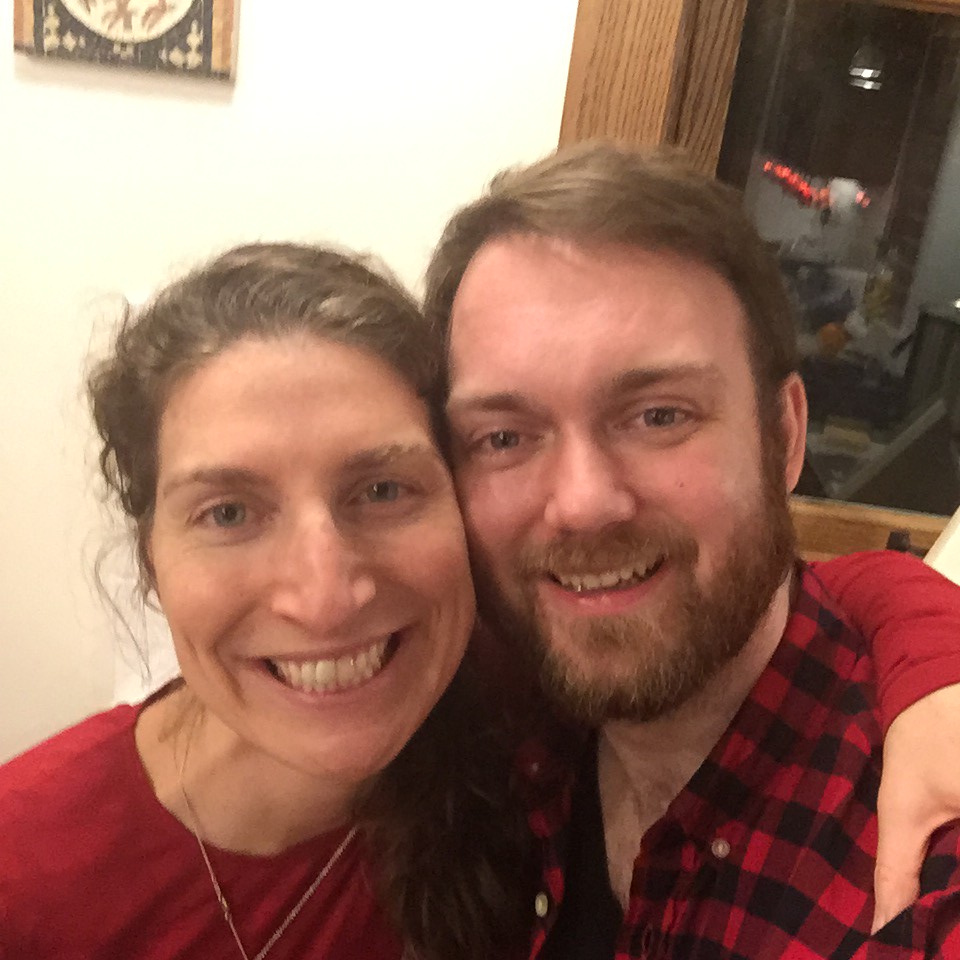
And on a completely different note, I have some SUPER EXCITING NEWS...Two of my very favorite people in the whole universe are getting hitched! (Can you see the post-proposal glowiness in that picture?? I have never seen Elliot so excited!)
I actually want to write about how these two totally having their s**t together inspires me to follow suit. Yet another post to add to the 2016 to-do list. ;)
Shedding My Skin
You must follow the path that opens to you and you must never stop. And it will demand that you shed your skin, over and over and over again. Your skin must be shed for that skin is not the skin of a writer; it is the skin of whatever you were before.
—Stephen Harrod Buhner
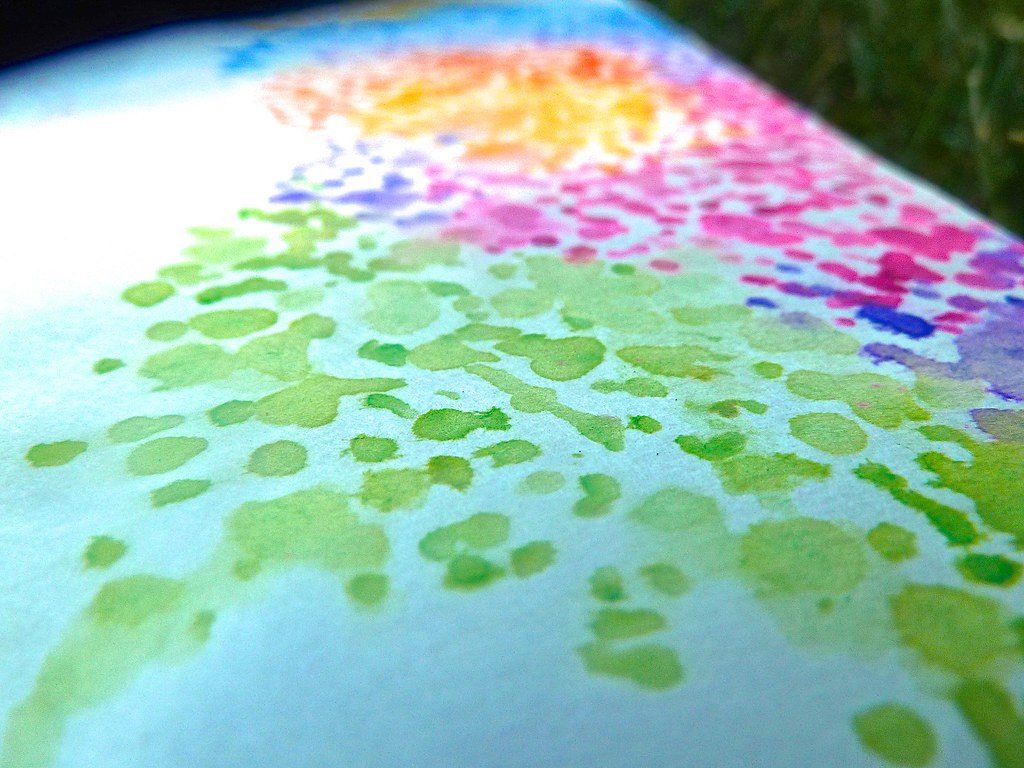
The last time I blogged about decluttering I mentioned getting rid of all my grade-school artwork, and how good it felt to photograph the drawings I was most proud of before dumping it all in the blue recycling bin. I thought I'd post some of my favorite old drawings here.
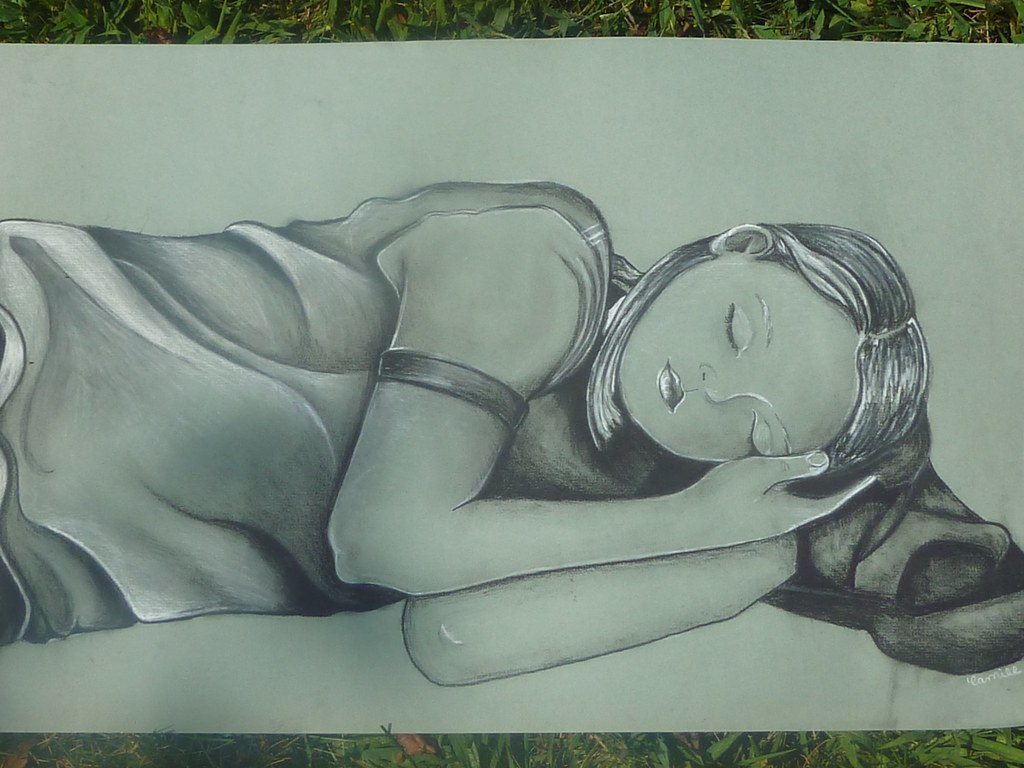
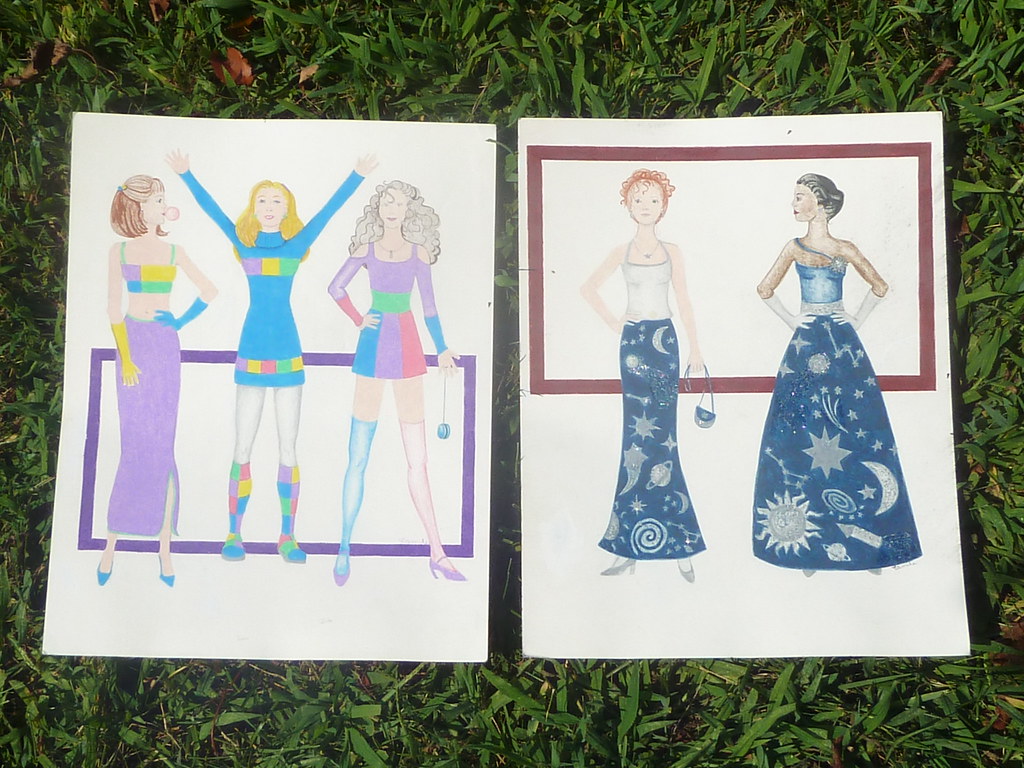
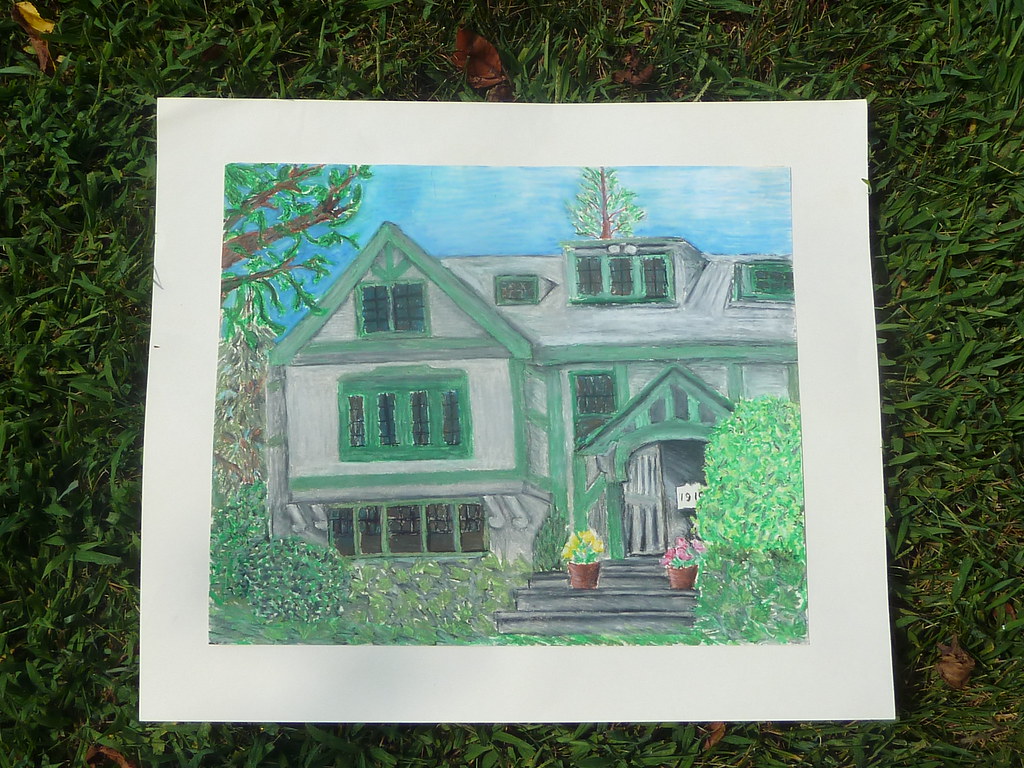
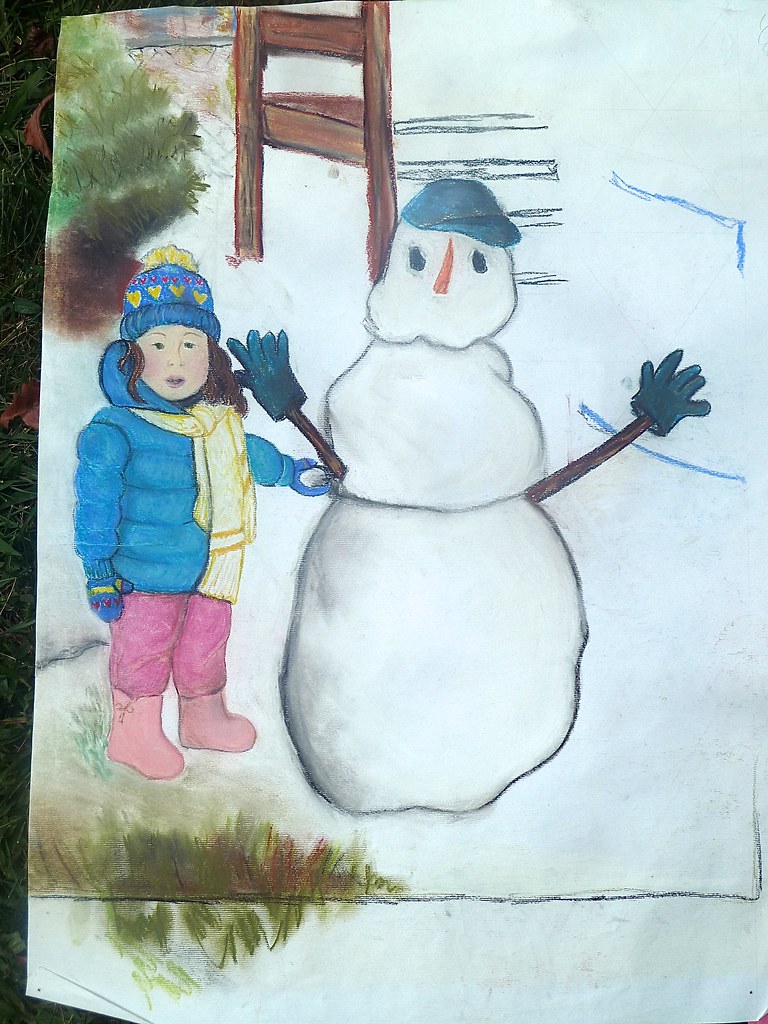


I really love the quote above from Stephen Harrod Buhner (in Ensouling Language), although I keep swapping the word "artist" for "writer" whenever I read it. It may seem kind of weird that tossing old-old artwork should feel so momentous to me, but it does. I'm finally making space for new images. (I'm not done yet though—I have more artwork from my early 20s to sort through!)
The Aspirational Lightness of Being, part 2
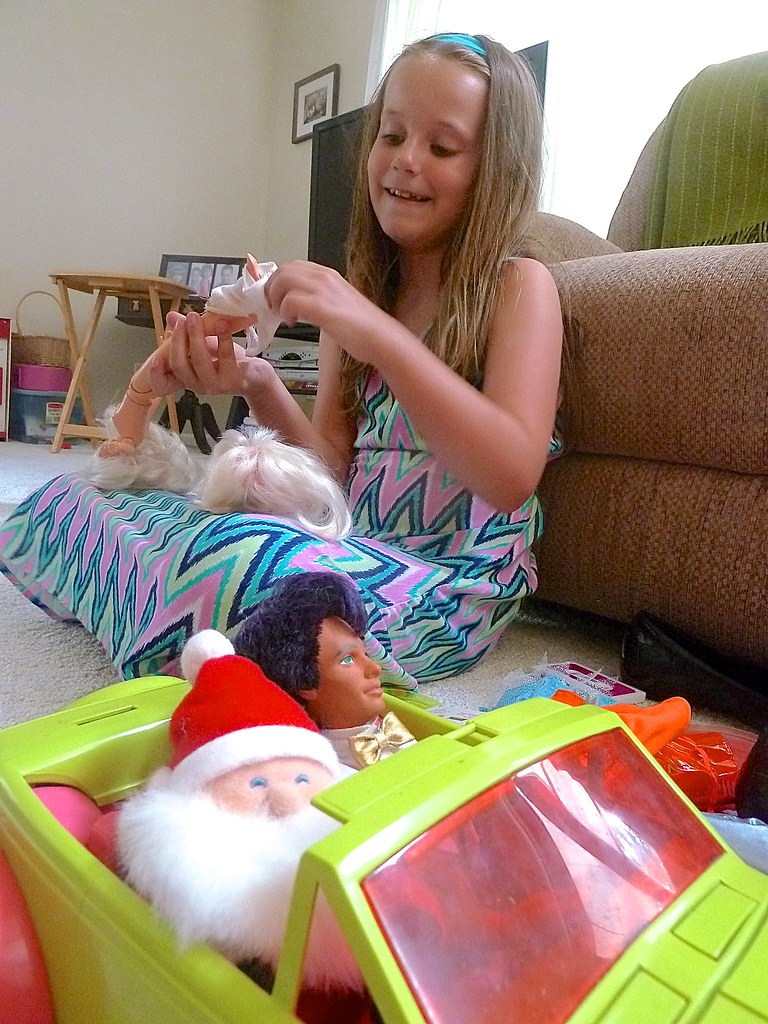
(The Aspirational Lightness of Being, part 1.)
Most of the junk I have accumulated over the past thirty-four years is stored in towering stacks of Rubbermaid bins in my mother's basement. Understandably, my mumsy has been hinting for quite some time now that she would be extreeeeemely happy if I were to winnow my (90% aspirational) collections of books and kitchenware. So I put out fourteen (!) bins, boxes, and bags for Vietnam Vets, and there's still a lot left to go through.
You may have heard of this Japanese book about decluttering called The Life-Changing Magic of Tidying Up. It's a bestseller, and lots of journalists and bloggers are talking about it. Personal organizing is an industry unto itself, of course, but after reading Marie Kondo's book (on the plane home to New Jersey) I understand why people are so enthusiastic about it. Kondo's signature strategy is this: you're supposed to pick up the item in question (actually touch it) and ask yourself, "Does this spark joy?"
At first this seemed kind of corny. But I found that asking this simple question made the keep-or-toss conundrum incredibly easy—and the more I asked it, the more I realized that many of my possessions are still mine only because I either feel guilty about letting them go (unread books, unused gifts, my own handknit sweaters, etc.) or have just been too lazy or disorganized to dispose of them properly (like shoes I never wear anymore). Granted, the low-spark or no-spark factor is probably much higher on my possessions in New Jersey (I did leave them behind, after all), but I bet there are still a lot of things I'll want to let go of once I'm home again. (I'm still in New Jersey as I write this, so it'll be interesting to see how I view the objects in my bedroom when I get back to Boston.)
I shared The Life-Changing Magic of Tidying Up with my mom, and she laughed hysterically when I read the following passage aloud:
Now I realize that people who have a convenient place to send things, such as a parents' house, are actually quite unfortunate. Even if the house is large with rooms to spare, it is not some infinitely expanding fourth dimension...
(The mother of the client in question came to Marie afterward for help in dealing with her daughter's junk!)
Here are a few more tidbits that really resonated for me:
My basic principle for sorting papers is to throw them all away. Corollary: When you attend a seminar, do so with the resolve to part with every handout distributed. If you regret recycling it, take the same seminar again, and this time apply the learning. It's paradoxical, but I believe that precisely because we hang on to such materials, we fail to put what we learn into practice.
On demoting tired clothing to "loungewear": ...[I]t doesn't seem right to keep clothes we don't enjoy for relaxing around the house. This time at home is still a precious part of living. Its value should not change just because nobody sees us...What you wear in the house does impact your self-image.
When you come across something that you cannot part with, think carefully about its true purpose in your life. You'll be surprised at how many of the things you possess have already fulfilled their role.
On regretting throwing something out: Life becomes far easier once you know that things will still work out even if you are lacking something.
Human beings can only truly cherish a limited number of things at one time.
By handling each sentimental item and deciding what to discard, you process your past.
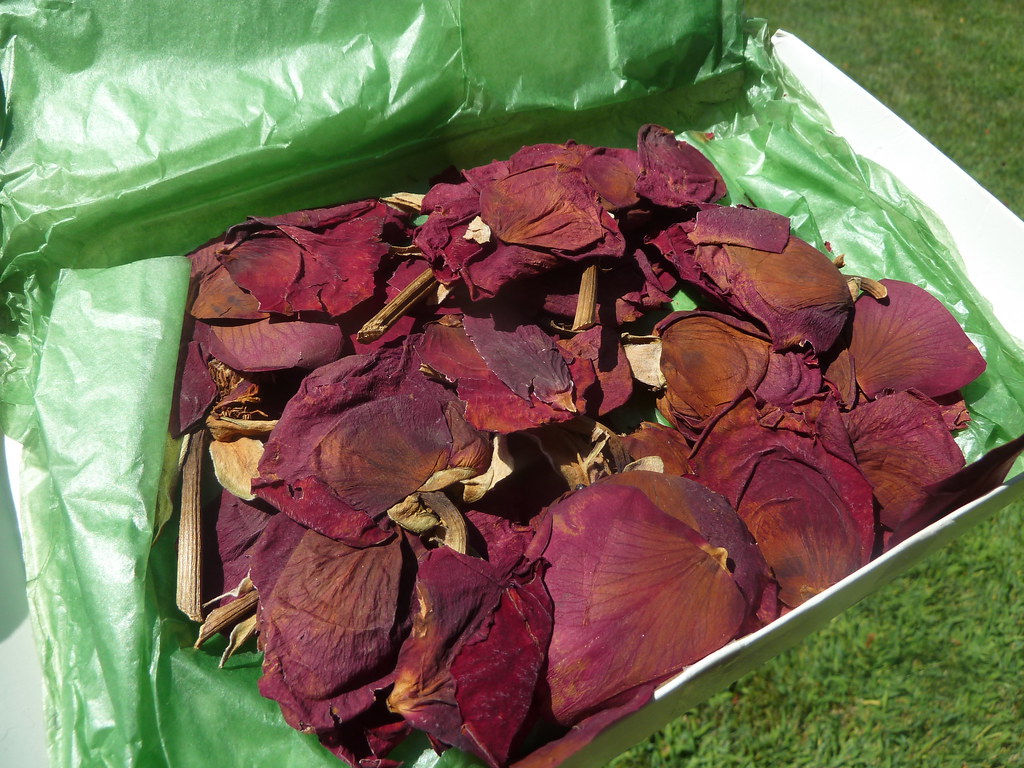

That last one is why I need to get rid of about 85% of my possessions: you gotta release everything that's over and done with to make space for all the exciting new stuff that's waiting to come into your life:
Mary Modern drafts? Destined for the recycling bin. (There are plenty more novels to write.)
Bulging portfolio of grade-school and high-school artwork? Recycled or trashed—ALL of it!—because I don't need proof that I could have been an artist. (What sort of artist would I like to grow into now?)
Pressed roses given to me by a very sweet young man on my 17th birthday? I scattered them in the woods behind the backyard fence. (Hello, love!)
As Marie Kondo writes, The space in which we live should be for the person we are becoming now, not for the person we were in the past. When you put it that way, I can actually get excited about cleaning out my closet.
The Aspirational Lightness of Being
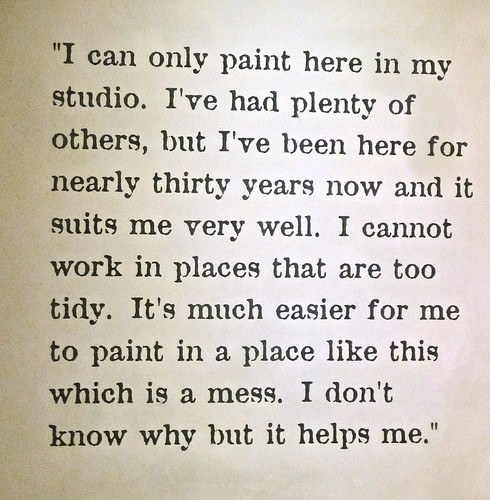
I have been a messy person for a very long time now, or at least that's how I've seen myself. I have manila envelopes stuffed with scraps of ideas going all the way back to my years at NYU, and I have a bad habit of leaving piles of trash in the corner of my room for days or even weeks (paper recycling, mostly—never rotting food or anything, I do feel the need to clarify that!) Instead of filing documents and receipts, I've tossed them into a cardboard box to be dealt with on some occasion in the nebulous future when Camille Finally Gets Her S**t Together. (And it isn't just my apartment; my stepfather has affectionately remarked that my bedroom looks as if I still live there.)
When I visited my aunt and uncle in Arizona in 2007 on my little Mary Modern book tour, I slept on an air mattress in my aunt's craft room, where the walls are lined with neatly organized scrapbooking and soapmaking supplies. How lovely it was to wake up inside that roomful of potential, to think of all the things she hasn't made yet that will be. The reason why all that stuff (however organized it is, it is still STUFF) didn't stress me out is, of course, that it isn't my stuff. All the ideas I have yet to implement, the books I have yet to read, the art and craft supplies I have yet to use: these things are making me anxious. I have no system for keeping them in order, for curating (such a buzzword these days, ha) my collections so that I don't feel overwhelmed by too much creative potential. When I looked through the plexiglass at Francis Bacon's studio at the Hugh Lane Gallery in Dublin, all I could think was please don't let me end up like this.

Thing is, though: I'm the one who decides how clean and organized my working and living spaces are going to be, and it doesn't matter if I'm being a bit hard on myself here—either way, I have to find a system that works. I want to feel that I'm working (or crafting) effectively. So here are some resolutions:
1. MAKE THE BED. For crying out loud.
2. Break down the seemingly-endless task. My sister pointed out that it makes way more sense to figure out and start using a system for organizing my ideas as I get them, folding in the contents of those manila envelopes over time, rather than tackling the backlog straight away. I always attempt it that way, and an hour later I throw up my hands.
3. Do the tasks regularly so they never reach the point of 'seemingly-endless'! On Sunday nights I'm going to input receipts into my tax spreadsheet, 'process' any other paperwork, and empty my wastebasket.
4. Get the right storage. I picked up one of those black-and-clear-plastic five-drawer cabinets via Craigslist the other week, and I'm going to buy some cubbies (like Ikea, but not) for my art and craft stuff, which will go under my desk (which is actually an 8' long table, so no built-in shelving).
5. Use Trello (thanks, Elliot!) to manage to-do lists.
This is good for a start, right? And here are some links I've found helpful and/or inspiring:


I've been meaning to do a "nesting" post since last summer, but it'll be so much better to do it once my space is naturally tidy (as opposed to my tidying it up for the picture taking, ha). One thing I'm excited to share is my (DIY) project bag rack, which makes use of the odd (as in charming!) space created by the slanting attic wall. More soon!
(This post is a continuation of item five on my 2015 list of intentions.)
Gratitude 2015 giveaway!; or, a gift in 365 parts
Happy New Year, everybody! To celebrate, I'm giving away a copy of my friend Susa Talan's 2015 gratitude calendar! Same deal as usual:
You get ONE entry for a Facebook comment
TWO entries for a share, tweet or retweet
and THREE entries for leaving a comment on this post.
I'll keep this giveaway open 'til midnight tomorrow (January 2nd) and choose a random entry.
* * *
I'm always excited for the start of a new year, but today I'm bursting at the seams in the very best way. You know it's going to be a terrific year when the new novel is actually hovering somewhere in the middle of a long list of projects, adventures, and other blessings. This month—thanks to a part-time gig at my all-time favorite studio, yay!—I will slip back into my daily yoga routine in preparation for teacher training in November. Yoga and a couple of secret writing projects are at the top of that list.
I'm not much for "resolutions," per se; I prefer to see them as directions in which I'd like to grow. For the sake of accountability I'll share my "2015 expansion" with you here (and I want to hear what you're intending for this year as well!):
1. Yoga! I didn't manage a freestanding handstand last year, but it is TOTALLY happening in 2015.
2. Tuck into a series of delicious nonfiction projects. (This is just one of them.) I'm renewing my membership to the Writers' Room, so my productivity is about to skyrocket.
3. Make more art. I'm planning to take a printmaking class at MassArt over the summer.
4. After years of wistfully scrolling through IntSweMoDo projects on Ravelry (the challenge is to knit one sweater per month!), I'm finally committing to it, with one tweak: knit a sweater OR sew a dress (or other involved project, like shorts or what have you), EVERY MONTH. I have enough yarn and fabric to last through the summer, at least!
5. And this is perhaps the most important: this year I finally want to feel like I have my act together. I need to work way more efficiently than I do now. I'm talking zero inbox (inspired by my friend Kirsty), workable craft supply and book storage, and no more manila envelopes stuffed with decade-old scraps of scribbled ideas!
I DID IT, YOU GUYS! Inbox zero is not a myth! pic.twitter.com/c8Xin0KZ2u— Kirsty Logan (@kirstylogan) May 9, 2014
I'll be blogging more about these 2015 intentions over the next month, by the way.
Doing the zombie walk into the light http://t.co/mnRlsmeciT — squam (@squamlove) December 31, 2014
What are your hopes and ambitions for 2015, friends? By the by, I highly recommend settling in with your hot beverage of choice and filling out Susannah Conway's Unravelling 2015 workbook. Elizabeth and I looked over our workbooks from last year and were stunned at how much of what we envisioned for the year came to pass. (Just be REALLY clear about what you want, because if you leave any blanks, you can't expect to manifest much in that category...)
Camille gets to see the crazy amazing light in this place. http://t.co/YmxyDkKMmF — squam (@squamlove) January 1, 2015
* * *EDIT: Congrats to Liv for winning the calendar giveaway!
The Paper Mammoth
Have you noticed the "Writers' Rooms" link on the right side of the page? I've been daydreaming about a proper study-slash-studio since I was a teenager, and that weekly feature in the Guardian fuels my reveries. I love looking at other writers' workspaces and reading about why they've chosen a particular location, piece of furniture, or wall decoration, and how each element helps (or hinders) them in their work. In my head I've painted the walls and installed (and filled) the bookcases and chosen the upholstery for the wing-backed chair in the corner, scoured junk shops looking for the perfect big old desk, and finally settled upon the perfect filing system. I'm so nerdy I even want to organize my shelves with the Dewey decimal system (um...no...not even kidding).
Of course—seeing as I live in a rented room, do most of my writing at the library, and have books and notes scattered between three separate domiciles—the only part of this fantasy that is currently relevant is the bit about the filing system. I do a lot of talking about "getting organized." You could say that my chaos must be functional enough if I've managed to produce a few publishable manuscripts out of it, but that's not good enough.
It isn't so much a matter of every book, print-out, and notecard being in its proper place as much as having an effective system for filing ideas. I have lots of notes on receipts and torn bits of notepaper, and I do manage to hold on to most of it, but it's all very inefficient. You can just write every random thought down in a notebook, but then each of those individual ideas are eventually going to need sorting according to their respective projects (in a single notebook I could have notes for the project at hand alongside ideas for future novels and stories, notes on a local restaurant I want to write up for the second edition, lists of books to read, and even sketches of sweater designs I'd like to use as inspiration once I have the skillz to knit it). So how to sort it all while keeping it portable?
At first I thought index cards were the best way to go...but then how would I sort and store them? I've tried recipe boxes with tabs, but that seems to work better for sorting ideas within a single project. And if the idea could be expressed in only a word or two, it seemed a little silly to devote a full-sized index card to it. I also started using Stickies as virtual index cards, but then my hard drive crashed and I lost it all. (Incidentally, the Mary Modern folder was the only thing the tech guy was able to retrieve. KISMET!)
Then I had the idea to sort all ideas:

I had asked my dad for a Rolodex a couple Christmases ago, but then I realized I'm too nomadic and didn't know enough people to bother actually using it (and yes, the address book on my iBook dock makes a Rolly pretty much obsolete, but see previous paragraph for why I don't use it much.) I've got tabs for words and phrases, witticisms ("If you had a penis you'd understand" —guess who), witchy business, WWII flashbacks, and so forth, and another tab for everything that isn't Petty Magic. That stuff can be sorted later. So far it's working out pretty well. The only annoying thing is that Rolly cards are actually rather expensive, and I need to find a hard case for when I travel with it.
I know: I'm a total nerd. A pedant, even. Call me what you like, so long as I can keep it all straight.










